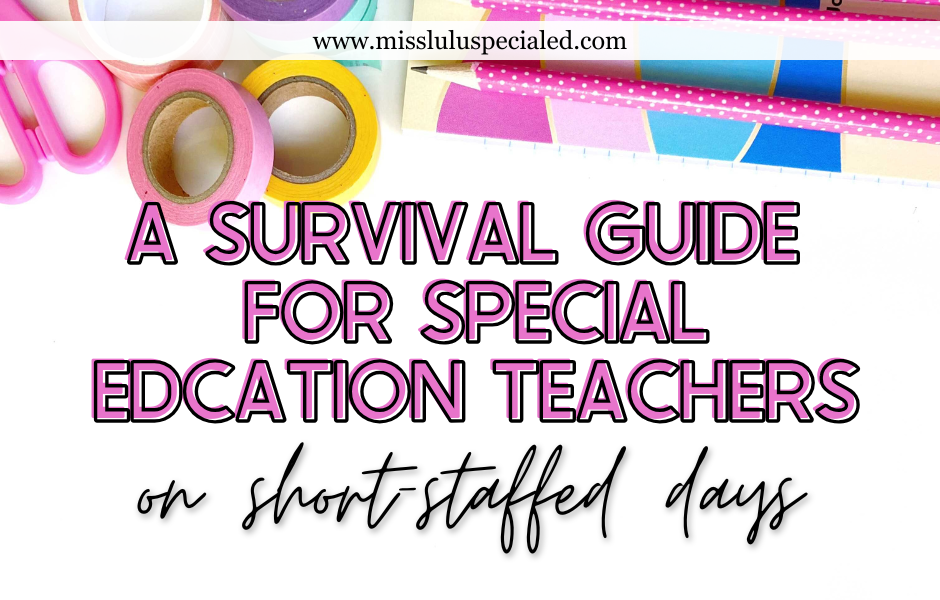MAKING INCLUSION WORK IN SECONDARY SETTINGS
- Laura Hackwell

- Apr 12, 2021
- 4 min read
Updated: Feb 27, 2022
I teach in a self-contained classroom, but I schedule several general education classes for my students each trimester. I work closely with my school counselor to create schedules that will interest and challenge my students. I want them in classes where they will learn something. Inclusion not only provides time for social interaction outside of my classroom, but it’s an opportunity to work on generalizing skills and allows students to learn some grade level content. Some of the classes that my students take include PE, music, choir, history, health, keyboarding, science, and college & career awareness. In a secondary setting, meaningful inclusion can be hard. The content is difficult, and teachers lack training and knowledge when it comes to working with students with disabilities. Here are a few tips for making inclusion successful in a secondary setting.

1. Communication with general education teachers is key. Before the trimester starts, schedule a time to meet with each teacher and discuss the student(s), related IEP goals, and accommodations or modifications that will help the student be successful. I provide a hand out with examples on how to modify certain types of assignments. Another important discussion that needs to occur is how the teacher will grade the student. You'll have to work with them regarding their individual grading policies and your school's policies, but it's important to discuss it prior to the end of the grading period to avoid issues.
2. Explain paraprofessional expectations clearly to both the teacher and the para. Make sure the teacher knows if the para is there to only assist one student or if they can ask them to help with other students as well. In addition, it's important that the para understands their position in the general education classroom. It's easy to provide too much help or to fade into the background and not provide enough help. Make your expectations clear. I use this data sheet to help my paras monitor inclusion time. Another important thought- inclusion is when the rest of your school sees how to treat students with disabilities. Make sure it's a positive view and that they are seeing how capable they are. Your paras that go to inclusion classes are modeling the appropriate way for others to interact with the student they are working with. It needs to be an age appropriate and positive model.
3. Work with the general education teacher to break down each unit. Find out what the big idea is that we want students to learn. You may have to narrow it down for your special education students because secondary content is difficult, and it keeps getting harder! For each unit, the general education teacher determines the big idea, comes up with a few domain specific vocabulary words, and creates a modified assessment. Then, my paras talk with the general education teachers to get this information and on days where there is extra time, they work with the student(s) to help them learn the specific content that we've decided on.

4. Modify assignments but ensure that the students are working on the same topic and similar skills. For example, you might modify the instructional level by providing material on the same topic but at a lower reading level. Or, you might modify or narrow down the content, as discussed in the last tip. For example, if students in a home economics type class are learning about creating a budget, our students on IEPs may be learning to determine if they have enough money to make a single purchase. They are still working on a similar skill related to budgeting, but it's a prerequisite skill and it's more appropriate for their current learning level. You can also modify the performance criteria. Maybe the rest of the class is writing a 5-paragraph essay but your students in special education are writing a one paragraph response or creating a PowerPoint presentation. It’s important that inclusion is more than being physically present! Find something meaningful that’s at their level and that relates to the content area and the current unit of study.
5. Try to find time to pop in and observe on occasion. It’s so helpful to actually see what’s happening in the classroom. You’ll be able to make quick adjustments. It’s hard to give advice to paras that are spending time in inclusion when you don’t know what is happening in the class. This has been an eye-opening experience for me! Plus, I love observing and learning new things from other teachers!
Finally, remember that building a relationship with your general education colleagues can take time. Some are easier to work with than others. Try to be approachable, provide support and ask them questions. We are teachers and we all love that lightbulb moment when we see a student learn something new. We must get that same buy in with our general education teachers, and sometimes even our administrators. Help them see how successful students with IEPs can be in their classes by assisting with accommodations. Successful inclusion starts with us. Guys, we have to work together and as a team. We have to do more than consider inclusion a break for us and let it be the general education teacher’s problem. I know you have a million things to do but I also promise that it gets easier with time. Keep pushing for your students to be included and keep educating your administrators and colleagues. We can create an inclusive environment for each student.











Comments